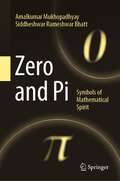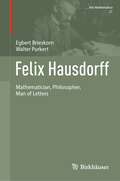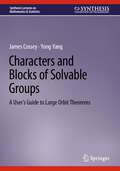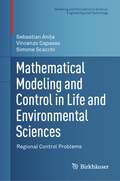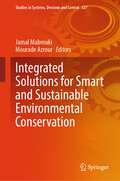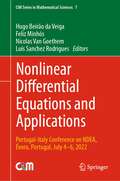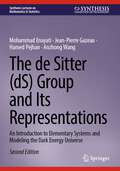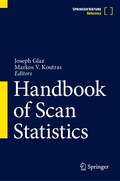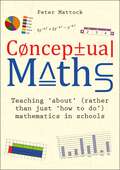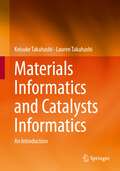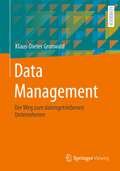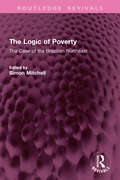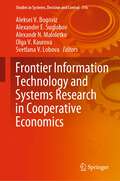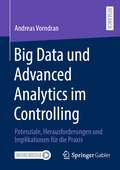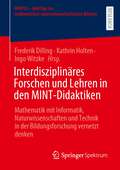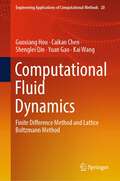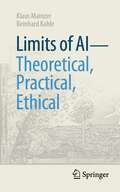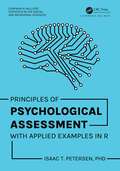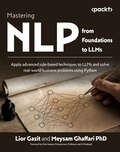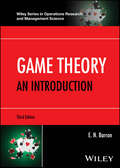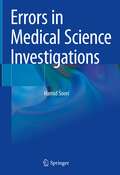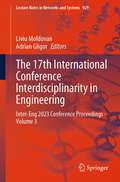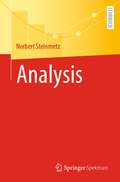- Table View
- List View
Zero and Pi: Symbols of Mathematical Spirit
by Amalkumar Mukhopadhyay Siddheshwar Rameshwar BhattThe book, divided into two major parts, discusses the evolution of the concept and symbols of zero and the history of pi. Both the topics are discussed from the Neolithic Age to the nineteenth century. The book also clears the assumption that Johann Heinrich Lambert (AD 1761) only invented the irrationality of pi by crediting Lambert jointly with André Marie Legendre (AD 1794).Part 1, consisting of six stages spread in six chapters, meets a challenge to the authors as eminent scholars of the history of mathematics have diverse opinions based on conjectures. This part primarily discusses how the symbol O, in the Vedic religious practices, considered a replica of the universe prescribed for meditation on the unknown Brahman (conceived of as the space supreme in the Upanishads), was later transcended to the symbol of an unknown quantity in mathematics along with a dot for zero in an arena of atheism. It also highlights how the zero notation and the decimal system of Indian numerals embellished with the algebraic thoughts of Brahmagupta passed on to China and Europe via Arabia. Topics in this part have traced the development from the origin to the final form as seen today after the western practice and try to put an end to the long-standing debate over history. Appendices contain the Sanskrit verses (transliterated with meanings into English) along with the essential mathematical deduction referred to in the body of the part to help the reader to have a better understanding.Part 2 speaks of a novel idea of unveiling the nature of pi interwoven with threads of historical ups and downs in the world scenario. This part, containing five chapters, collects all available up-to-date data in every field of history to make the presentation complete in all respects. This part discusses the origin of the definition of pi as the rim of a wheel is thrice its diameter at the Indus Valley in the fourth millennium BC. This part also discusses the enlightenment of China in circle-squaring (classical method), Indian mathematics with astronomical knowledge along the Buddhist channel, and India’s discovering circumference/diameter as a non-Euclidean number.
Felix Hausdorff: Mathematician, Philosopher, Man of Letters (Vita Mathematica #21)
by Egbert Brieskorn Walter PurkertFelix Hausdorff is a singular phenomenon in the history of science. As a mathematician, he played a major role in shaping the development of modern mathematics in the 20th century. He founded general topology as an independent mathematical discipline, while enriching set theory with a number of fundamental concepts and results. His general approach to measure and dimension led to profound developments in numerous mathematical disciplines, and today Hausdorff dimension plays a central role in fractal theory with its many fascinating applications by means of computer graphics. Hausdorff ’s remarkable mathematical versatility is reflected in his published work: today, no fewer than thirteen concepts, theorems and procedures carry his name. Yet he was not only a creative mathematician – Hausdorff was also an original philosophical thinker, a poet, essayist and man of letters. Under the pseudonym Paul Mongré, he published a volume of aphorisms, an epistemological study, abook of poetry, an oft-performed play, and a number of notable essays in leading literary journals. As a Jew, Felix Hausdorff was increasingly persecuted and humiliated under the National Socialist dictatorship. When deportation to a concentration camp was imminent, he, along with his wife and sister-in law, decided to take their own lives. This book will be of interest to historians and mathematicians already fascinated by the rich life of Felix Hausdorff, as well as to those readers who wish to immerse themselves in the intricate web of intellectual and political transformations during this pivotal period in European history.
Characters and Blocks of Solvable Groups: A User’s Guide to Large Orbit Theorems (Synthesis Lectures on Mathematics & Statistics)
by James Cossey Yong YangThis book highlights recent developments in the representation theory of finite solvable groups, which seeks to connect group theory to linear algebra in ways that allow for better study of the groups in question. Over the last several decades, a number of results in the representations of solvable groups have been proven using so-called “large orbit” theorems. This book provides an extensive survey of the current state of the large-orbit theorems. The authors outline the proofs of the large orbit theorems to provide an overview of the topic, then demonstrate how these theorems can be used to prove new results about solvable groups.
Mathematical Modeling and Control in Life and Environmental Sciences: Regional Control Problems (Modeling and Simulation in Science, Engineering and Technology)
by Sebastian Aniţa Vincenzo Capasso Simone ScacchiThis monograph explores the use of mathematical modeling and control theory in a variety of contemporary challenges in mathematical biology and environmental sciences. Emphasizing an approach of learning by doing, the authors focus on a set of significant case studies emerging from real-world problems and illustrate how mathematical techniques and computational experiments can be employed in the search for sustainable solutions.The following topics are extensively discussed:Eradicability and control of a paradigmatic epidemic model, with a view to the existence of endemic states, their stability, and the existence of travelling wavesA spatially structured epidemic model concerning malaria as an example of vector-borne epidemicsOptimal harvesting problems for space-structured and age-structured population dynamicsControlling epidemics in agriculture due to pest insectsThe role of predators as a possible biocontrol agent of epidemics in agricultureControl by taxation of the environmental pollution produced by human activitiesThe originality of this text is in its leitmotif – regional control – along the principle of “Think Globally, Act Locally.” Indeed, for example, in many real spatially structured ecosystems, it is practically impossible to control the relevant system by global interventions in the whole habitat.Proofs are given whenever they may serve as a guide to the introduction of new concepts. Each chapter includes a comprehensive description of the numerical methods used for the computational experiments, and MATLAB© codes for many of the numerical simulations are available for download. Several challenging open problems are also provided to stimulate future research.This text is aimed at mathematicians, engineers, and other scientists working in areas such as biology, medicine, and economics. Graduate and advanced undergraduate students of a quantitative subject related to the analysis and applications of dynamical systems and their control will also find it to be a valuable resource.
Integrated Solutions for Smart and Sustainable Environmental Conservation (Studies in Systems, Decision and Control #527)
by Jamal Mabrouki Mourade AzrourResource depletion and ecological risks are more than ever at the heart of societal and economic debates. In the 1970s, the developed countries saw the Fordist growth regime crumble in parallel with the growing awareness of the ecological issue. Since the first industrial revolutions, technological dynamics have been the cause of many environmental problems, and there is a consensus on the diagnosis. Integrated technologies reduce resource use and/or pollution at source by using cleaner production methods. This generally leads to a reduction in the by-products, energy inputs and resources used by companies to produce goods. Integrated production technologies reduce negative environmental impacts at source by substituting or modifying cleaner technologies. Examples of integrated, or cleaner, production technologies are the recirculation of materials, the use of environmentally friendly materials (such as the substitution of water for organic solvents), etc. However, the implementation of integrated production technologies is often hampered by obstacles related to cost, coordination and skill inertia problems and to the productive organisation of companies. In addition to the high investment costs of new integrated technologies, additional barriers may emerge depending on the nature of the environmental problem and the type of environmental regulation in question.
Nonlinear Differential Equations and Applications: Portugal-Italy Conference on NDEA, Évora, Portugal, July 4–6, 2022 (CIM Series in Mathematical Sciences #7)
by Hugo Beirão da Veiga Feliz Minhós Nicolas Van Goethem Luís Sanchez RodriguesThis proceedings volume gathers selected, carefully reviewed works presented at the Portugal-Italy Conference on Nonlinear Differential Equations and Applications (PICNDEA22), held on July 4-6, 2022, at the University of Évora, Portugal.The main focus of this work lies in non-linear problems originating in applications and their treatment with numerical analysis. The reader will also find new advances on topics such as ordinary and partial differential equations, numerical analysis, topological and variational methods, fluid mechanics, operator theory, stability, and more.The Portugal-Italy Conference on Nonlinear Differential Equations and Applications convenes Italian and Portuguese researchers in differential equations and their applications to amplify previous collaboration and to follow and discuss new topics in the area. Reflecting the increasing teamwork involving the two mathematical communities, the conference has been opened to researchers from all nationalities.While researchers in analysis and related fields are the primary readership of this volume, PhD students can rely on this book as a valuable source to keep pace with recent advances in differential equations and cutting-edge applications.
The de Sitter: An Introduction to Elementary Systems and Modeling the Dark Energy Universe (Synthesis Lectures on Mathematics & Statistics)
by Mohammad Enayati Jean-Pierre Gazeau Hamed Pejhan Anzhong WangThis Second Edition is a comprehensive update, integrating the latest research and theoretical advancements in the field of de Sitter (dS) group representations. Building on the success of the first edition, the book offers a more in-depth analysis of mathematical aspects, conceptual foundations, and practical implications related to the dS group, including its Lie manifold, Lie algebra, and co-adjoint orbits, viewing the latter as potential classical elementary systems within the context of dS spacetime. Additionally, the examination of unitary irreducible representations (UIRs) sheds light on the potential existence of quantum elementary systems within the dS spacetime framework. The authors emphasize consistency with Wigner's approach to elementary systems, incorporate Wigner's principles and exploring projective UIRs of the dS group, and provide a deeper insight into the nature of dS elementary systems. Particular attention is paid to: the “smooth” transition from classical to quantum theory, the physical content under vanishing curvature, and the thermal interpretation from a quantum perspective. The book also focuses on the physical interpretation of elementary systems in curved spacetimes, recognizing the limitations of traditional concepts derived from flat Minkowski spacetime and the Poincaré group.
Conceptual Maths: Teaching 'about' (rather than just 'how to do') mathematics in schools
by Peter MattockWritten by Peter Mattock, Conceptual Maths: Teaching 'about' (rather than just 'how to do') mathematics in schoolsaims to empower teachers to support students on a comprehensive and coherent journey through school mathematics. Showcasing the best models, metaphors and representations, it provides excellent examples, explanations and exercises that can be used across the curriculum. Concepts are at the heart of the study of mathematics. They are the ideas that remain constant whenever they are encountered, but which combine and build upon each other to create the mathematical universe. It is the structure of each concept that gives rise to the procedures that are used in calculation and problem-solving - and, by learning about these structures, a learner can make sense of how different processes work and use them flexibly as need demands. In his first book,Visible Maths, Peter Mattock focused on the use of representations and manipulatives as images and tools and how this can provide a window into some of these mathematical structures. His aim in Conceptual Mathsis to go deeper, beyond the procedures, and to shed greater light on the structures of the subject's different concepts. The book explores how a variety of visual tools and techniques can be used in the classroom to deepen pupils' understanding of mathematical structures, concepts and operations, including: number; addition and subtraction; multiplication and multiples; division and factors; proportionality; functionality; measures; accuracy; probability; shape and transformation; and vectors, among many others. In so doing, Peter equips teachers with the confidence and practical know-how to help learners assimilate knowledge of mathematical concepts into their schema and take their learning to the next level. Containing numerous full-colour diagrams and models to illustrate the conceptual takeaways and teaching techniques discussed, Conceptual Mathsalso includes a glossary covering the key mathematical terms. Suitable for teachers of maths in primary, secondary and post-16 settings
Materials Informatics and Catalysts Informatics: An Introduction
by Keisuke Takahashi Lauren TakahashiThis textbook is designed for students and researchers who are interested in materials and catalysts informatics with little to no prior experience in data science or programming languages. Starting with a comprehensive overview of the concept and historical context of materials and catalysts informatics, it serves as a guide for establishing a robust materials informatics environment. This essential resource is designed to teach vital skills and techniques required for conducting informatics-driven research, including the intersection of hardware, software, programming, machine learning within the field of data science and informatics. Readers will explore fundamental programming techniques, with a specific focus on Python, a versatile and widely-used language in the field. The textbook explores various machine learning techniques, equipping learners with the knowledge to harness the power of data science effectively. The textbook provides Python code examples, demonstrating materials informatics applications, and offers a deeper understanding through real-world case studies using materials and catalysts data. This practical exposure ensures readers are fully prepared to embark on their informatics-driven research endeavors upon completing the textbook. Instructors will also find immense value in this resource, as it consolidates the skills and information required for materials informatics into one comprehensive repository. This streamlines the course development process, significantly reducing the time spent on creating course material. Instructors can leverage this solid foundation to craft engaging and informative lecture content, making the teaching process more efficient and effective.
Data Management: Der Weg zum datengetriebenen Unternehmen
by Klaus-Dieter GronwaldDieses Lehrbuch betrachtet Data Management als interdisziplinäres Konzept mit Fokus auf den Zielen datengetriebener Unternehmen. Im Zentrum steht die interaktive Entwicklung eines Unternehmensdatenmodells für ein virtuelles Unternehmen mit Unterstützung eines online Learning Games unter Einbeziehung der Aufgaben, Ziele und Grundsätze des Data Managements, typischer Data-Management-Komponenten und Frameworks wie Datenmodellierung und Design, Metadaten Management, Data Architecture, und Data Governance, und verknüpft diese mit datengetriebenen Anwendungen wie Business Warehousing, Big Data, In-Memory Data Management, und Machine Learning im Data Management Kontext.Das Buch dient als Lehrbuch für Studierende der Informatik, der Wirtschaft und der Wirtschaftsinformatik an Universitäten, Hochschulen und Fachschulen und zur industriellen Aus- und Weiterbildung.
The Logic of Poverty: The Case of the Brazilian Northeast (Routledge Revivals)
First published in 1981, The Logic of Poverty consists of eight essays that share at least one assumption: that Northeast Brazil provides a startling example of inhumane economic development. The contributors have all worked in the area, and know it at first hand. They look at rural structure and the role of the unemployed ‘reserve army’, the state of the sugar industry, the ineffectiveness of the irrigation schemes, the stagnation in the fishing sector, the lack of credit available to peasants and the role of SUDENE, the first development agency in the region. Together they paint a picture of poverty and of the factors that allow it to continue, and they place that poverty in the context of the wider economy of Brazil, relating it to the extraordinary transformation that has been called ‘the Brazilian miracle’. This book will be of interest to students of geography, anthropology, economics and sociology.
The Logic of Poverty: The Case of the Brazilian Northeast (Routledge Revivals)
by Simon MitchellFirst published in 1981, The Logic of Poverty consists of eight essays that share at least one assumption: that Northeast Brazil provides a startling example of inhumane economic development. The contributors have all worked in the area, and know it at first hand. They look at rural structure and the role of the unemployed ‘reserve army’, the state of the sugar industry, the ineffectiveness of the irrigation schemes, the stagnation in the fishing sector, the lack of credit available to peasants and the role of SUDENE, the first development agency in the region. Together they paint a picture of poverty and of the factors that allow it to continue, and they place that poverty in the context of the wider economy of Brazil, relating it to the extraordinary transformation that has been called ‘the Brazilian miracle’. This book will be of interest to students of geography, anthropology, economics and sociology.
Frontier Information Technology and Systems Research in Cooperative Economics (Studies in Systems, Decision and Control #316)
by Aleksei V. Bogoviz Alexander E. Suglobov Alexandr N. Maloletko Olga V. Kaurova Svetlana V. LobovaThis book is the very first book-length study devoted to the advances in technological development and systems research in cooperative economics. The chapters provide, first of all, a coherent framework for understanding and applying the concepts and approaches of complexity and systems science for the advanced study of cooperative networks and particular cooperative enterprises and communities. Second, the book serves as a unique source of reliable information on the frontier information technologies available for the production, consumer, credit, and agricultural cooperative enterprises, discussing predominant strategies, potential drivers of change, and responses to complex problems. Given the diverse range of backgrounds and advanced research results, researchers, decision-makers, and stakeholders from all fields of cooperative economics in any country of the world will undoubtedly benefit from this book.
Big Data und Advanced Analytics im Controlling: Potenziale, Herausforderungen und Implikationen für die Praxis
by Andreas VorndranDie Digitalisierung und Entwicklungen im Gebiet der künstlichen Intelligenz haben in den letzten Jahren erhebliche Veränderungen in der Gesellschaft und der Unternehmenspraxis hervorgerufen. Aufkommende Technologien in den Feldern Big Data und Advanced Analytics werden auch im Controlling zunehmend diskutiert oder bereits eingesetzt. Dabei befinden sich der Wissensstand, inwieweit Big Data und Advanced Analytics das Controlling beeinflussen und verändern können, und die praktische Anwendung noch in einem frühen Stadium. Diese Arbeit befasst sich deshalb mit der Untersuchung der möglichen Auswirkungen von Big Data und Advanced Analytics im Controlling. Vor diesem Hintergrund werden die Einflüsse dieser digitalen Trends auf den Informationsversorgungsprozess des Controllings, auf die Erfüllung Controlling-spezifischer Anforderungen an Informationen und auf das Forecasting, die Budgetierung und die strategische Planung analysiert. Ferner werden praxisrelevante Herausforderungen, Grenzen und Risiken bei der Implementierung und Nutzung identifiziert sowie Implikationen zu deren Umgang zur Ausschöpfung der Potenziale abgeleitet.
Interdisziplinäres Forschen und Lehren in den MINT-Didaktiken: Mathematik mit Informatik, Naturwissenschaften und Technik in der Bildungsforschung vernetzt denken (MINTUS – Beiträge zur mathematisch-naturwissenschaftlichen Bildung)
by Frederik Dilling Kathrin Holten Ingo WitzkeFachübergreifender und fächerverbindender Unterricht in den MINT-Fächern (Mathematik, Informatik, Naturwissenschaften & Technik) werden seit Langem in Forschung und Bildungspolitik gefordert, aber selten in der unterrichtlichen Praxis umgesetzt. Um einen solchen Unterricht in der Schule zu fördern, ist es wichtig, die aus den MINT-Fachdidaktiken heraus gemeinsam entwickelten Konzepte zugänglich zu machen und Inhaltsfelder mehrperspektivisch zu erschließen.Der vorliegende Band stellt unterschiedliche interdisziplinäre Vorhaben aus den Bereichen Bildungsforschung, Lehrer*innenbildung und Unterrichtsentwicklung mit einem Fokus auf Mathematik vor.
Computational Fluid Dynamics: Finite Difference Method and Lattice Boltzmann Method (Engineering Applications of Computational Methods #20)
by Guoxiang Hou Caikan Chen Shenglei Qin Yuan Gao Kai WangThis book provides a concise and comprehensive introduction to several basic methods with more attention to their theoretical basis and applications in fluid dynamics. Furthermore, some new ideas are presented in this book, for example, a method to solve the transition matrix by difference operator transformation. For this method, the book gives the definition of Fourier integral transformation of translation operator, and proves the transition matrix equaling to the differential operator transformation, so that it is extended to general situations of explicit, implicit, multi-layer difference equations, etc. This flexible approach is also used in the differential part. In addition, the book also includes six types of equivalent stability definitions in two ways and deeply analyzes their errors, stabilities and convergences of the difference equations. What is more important, some new scientific contributions on lattice Boltzmann method (LBM) in recent years are presented in the book as well. The authors write the book combining their ten years teaching experience and research results and this book is intended for graduate students who are interested in the area of computational fluid dynamics (CFD). Authors list some new research achievements, such as simplified lattice Boltzmann method, the simplified lattice Boltzmann flux solver and discrete unified gas kinetic scheme, and expect that this new information could give readers possible further investigating ideas in their future research on CFD area.
Limits of AI - theoretical, practical, ethical (Technik im Fokus)
by Klaus Mainzer Reinhard KahleArtificial intelligence is a key technology with great expectations in science, industry, and everyday life. This book discusses both the perspectives and the limitations of this technology. This concerns the practical, theoretical, and conceptual challenges that AI has to face. In an early phase of symbolic AI, AI focused on formal programs (e.g., expert systems), in which rule-based knowledge was processed with the help of symbolic logic. Today, AI is dominated by statistics-based machine learning methods and Big Data. While this sub-symbolic AI is extremely successful (e.g., chatbots like ChatGPT), it is often not transparent. The book argues for explainable and reliable AI, in which the logical and mathematical foundations of AI-algorithms become understandable and verifiable.
Principles of Psychological Assessment: With Applied Examples in R (Chapman & Hall/CRC Statistics in the Social and Behavioral Sciences)
by Isaac T. PetersenThis book highlights the principles of psychological assessment to help researchers and clinicians better develop, evaluate, administer, score, integrate, and interpret psychological assessments. It discusses psychometrics (reliability and validity), the assessment of various psychological domains (behavior, personality, intellectual functioning), various measurement methods (e.g., questionnaires, observations, interviews, biopsychological assessments, performance-based assessments), and emerging analytical frameworks to evaluate and improve assessment including: generalizability theory, structural equation modeling, item response theory, and signal detection theory. The text also discusses ethics, test bias, and cultural and individual diversity.Key Features Gives analysis examples using free software Helps readers apply principles to research and practice Provides text, analysis code/syntax, R output, figures, and interpretations integrated to guide readers Uses the freely available petersenlab package for R Principles of Psychological Assessment: With Applied Examples in R is intended for use by graduate students, faculty, researchers, and practicing psychologists.
Principles of Psychological Assessment: With Applied Examples in R (Chapman & Hall/CRC Statistics in the Social and Behavioral Sciences)
by Isaac T. PetersenThis book highlights the principles of psychological assessment to help researchers and clinicians better develop, evaluate, administer, score, integrate, and interpret psychological assessments. It discusses psychometrics (reliability and validity), the assessment of various psychological domains (behavior, personality, intellectual functioning), various measurement methods (e.g., questionnaires, observations, interviews, biopsychological assessments, performance-based assessments), and emerging analytical frameworks to evaluate and improve assessment including: generalizability theory, structural equation modeling, item response theory, and signal detection theory. The text also discusses ethics, test bias, and cultural and individual diversity.Key Features Gives analysis examples using free software Helps readers apply principles to research and practice Provides text, analysis code/syntax, R output, figures, and interpretations integrated to guide readers Uses the freely available petersenlab package for R Principles of Psychological Assessment: With Applied Examples in R is intended for use by graduate students, faculty, researchers, and practicing psychologists.
Mastering NLP from Foundations to LLMs: Apply advanced rule-based techniques to LLMs and solve real-world business problems using Python
by Lior Gazit Meysam GhaffariEnhance your NLP proficiency with modern frameworks like LangChain, explore mathematical foundations and code samples, and gain expert insights into current and future trends Key FeaturesLearn how to build Python-driven solutions with a focus on NLP, LLMs, RAGs, and GPTMaster embedding techniques and machine learning principles for real-world applicationsUnderstand the mathematical foundations of NLP and deep learning designsPurchase of the print or Kindle book includes a free PDF eBookBook DescriptionDo you want to master Natural Language Processing (NLP) but don’t know where to begin? This book will give you the right head start. Written by leaders in machine learning and NLP, Mastering NLP from Foundations to LLMs provides an in-depth introduction to techniques. Starting with the mathematical foundations of machine learning (ML), you’ll gradually progress to advanced NLP applications such as large language models (LLMs) and AI applications. You’ll get to grips with linear algebra, optimization, probability, and statistics, which are essential for understanding and implementing machine learning and NLP algorithms. You’ll also explore general machine learning techniques and find out how they relate to NLP. Next, you’ll learn how to preprocess text data, explore methods for cleaning and preparing text for analysis, and understand how to do text classification. You’ll get all of this and more along with complete Python code samples. By the end of the book, the advanced topics of LLMs’ theory, design, and applications will be discussed along with the future trends in NLP, which will feature expert opinions. You’ll also get to strengthen your practical skills by working on sample real-world NLP business problems and solutions.What you will learnMaster the mathematical foundations of machine learning and NLP Implement advanced techniques for preprocessing text data and analysis Design ML-NLP systems in PythonModel and classify text using traditional machine learning and deep learning methodsUnderstand the theory and design of LLMs and their implementation for various applications in AIExplore NLP insights, trends, and expert opinions on its future direction and potentialWho this book is forThis book is for deep learning and machine learning researchers, NLP practitioners, ML/NLP educators, and STEM students. Professionals working with text data as part of their projects will also find plenty of useful information in this book. Beginner-level familiarity with machine learning and a basic working knowledge of Python will help you get the best out of this book.
Game Theory: An Introduction (Wiley Series in Operations Research and Management Science)
by E. N. BarronAuthoritative and quantitative approach to modern game theory with applications from areas including economics, political science, computer science, and engineering Game Theory acknowledges the role of mathematics in making logical and advantageous decisions in adversarial situations and provides a balanced treatment of the subject that is both conceptual and applied. This newly updated and revised Third Edition streamlines the text to introduce readers to the basic theories behind games in a less technical but still mathematically rigorous way, with many new real-world examples from various fields of study, including economics, political science, military science, finance, biological science, and general game playing. The text introduces topics like repeated games, Bayesian equilibria, signaling games, bargaining games, evolutionary stable strategies, extensive games, and network and congestion games, which will be of interest across a wide range of disciplines. Separate sections in each chapter illustrate the use of Mathematica and Gambit software to create, analyze, and implement effective decision-making models. A companion website contains the related Mathematica and Gambit data sets and code. Solutions, hints, and methods used to solve most problems to enable self-learning are in an Appendix. Game Theory includes detailed information on: The von Neumann Minimax Theorem and methods for solving any 2-person zero sum matrix game. Two-person nonzero sum games solved for a Nash Equilibrium using nonlinear programming software or a calculus method. Nash Equilibria and Correlated Equilibria. Repeated games and punishment strategies to enforce cooperation Games in Extensive Form for solving Bayesian and perfect information games using Gambit. N-Person nonzero sum games, games with a continuum of strategies and many models in economics applications, duels, auctions, of Nash Equilibria, and the Stable Matching problem Coalitions and characteristic functions of cooperative games, an exact nucleolus for three-player games, bargaining Game theory in evolutionary processes and population games A trusted and proven guide for students of mathematics, engineering, and economics, the Third Edition of Game Theory is also an excellent resource for researchers and practitioners in economics, finance, engineering, operations research, statistics, and computer science.
Errors in Medical Science Investigations
by Hamid SooriThis book introduces all common errors in medical science fields and the ways to control them. Systematic errors could be controlled both during study design and statistical analysis. Some errors have been presented in small segments but not in a comprehensive book. It covers many common errors that usually affect the research proposals, final reports, theses, and scientific presentations in the field of medical sciences as well as the rejection reasons on scientific papers. It will help researchers to control common errors using epidemiological and statistical methods.
The 17th International Conference Interdisciplinarity in Engineering: Inter-Eng 2023 Conference Proceedings - Volume 3 (Lecture Notes in Networks and Systems #929)
by Liviu Moldovan Adrian GligorThis book contains research papers that were accepted for presentation at the 17th International Conference on Interdisciplinarity in Engineering—INTER-ENG 2023, which was held on 5–6 October 2023, in the city of Târgu Mureș, Romania. The general scope of the conference “Towards transition for a more competitive European industry in a smart, safe and sustainable future” is proposing a new approach related to the development of a new generation of smart factories grounded on the manufacturing and assembly process digitalization. It is related to advance manufacturing technology, lean manufacturing, sustainable manufacturing, additive manufacturing, manufacturing tools and equipment. It is a leading international professional and scientific forum of great interest for engineers and scientists who can read in this book research works contributions and recent developments as well as current practices in advanced fields of engineering.
Analysis
by Norbert SteinmetzDas Buch wendet sich sowohl an Studierende aller mathematischen Fachrichtungen und mathematisch interessierte Studierende der Physik als auch an Dozentinnen und Dozenten, die den Aufbau ihres ersten Analysiskurses noch vor sich haben oder Anregungen für ihre Vorlesungen suchen. Inhalt und Form sind entstanden und vielfach erprobt in immer wieder kritisch veränderten und angepassten 3-semestrigen Analysiskursen. Etwa 2/3 des Buches decken die Erfordernisse einer 2-semestrigen Grundvorlesung Analysis ab, wohingegen das restliche Drittel Elemente der Fourieranalysis, der Differentialgeometrie, der gewöhnlichen Differentialgleichungen und der Funktionentheorie behandeln, Themen, denen eigenständige Vorlesungen auch weiterhin zu wünschen sind. Zu den Besonderheiten zählen die parallele und miteinander verzahnte Einführung des Riemann- und Lebesgueintegrals, die Einbettung einfacher Elemente der komplexen in die reelle Analysis, ausgedehnte Anwendungen – von der Heisenbergschen Unschärferelation über die Lösung der Wärmeleitungsgleichung bis hin zur Black-Scholes-Formel – sowie die Darstellung der Methode von Ostrogradski und des Dixon-Beweises der allgemeinen Cauchyschen Integralformel. Dass an verschiedenen Stellen die eingefahrenen Pfade verlassen wurden, wird der kundigen Leserschaft nicht verborgen bleiben. Die Frage „abstrakt oder anschaulich-verständlich“ wird konsequent zugunsten des letzteren entschieden. Die Übungsaufgaben sind in den laufenden Text eingebaut in der Hoffnung, dass sie so mehr Beachtung finden. Schließlich vermitteln die historischen Anmerkungen und Kurzbiographien einen Eindruck davon, wie die Analysis sich entwickelt hat und wer wesentlich an dieser Entwicklung beteiligt war.
